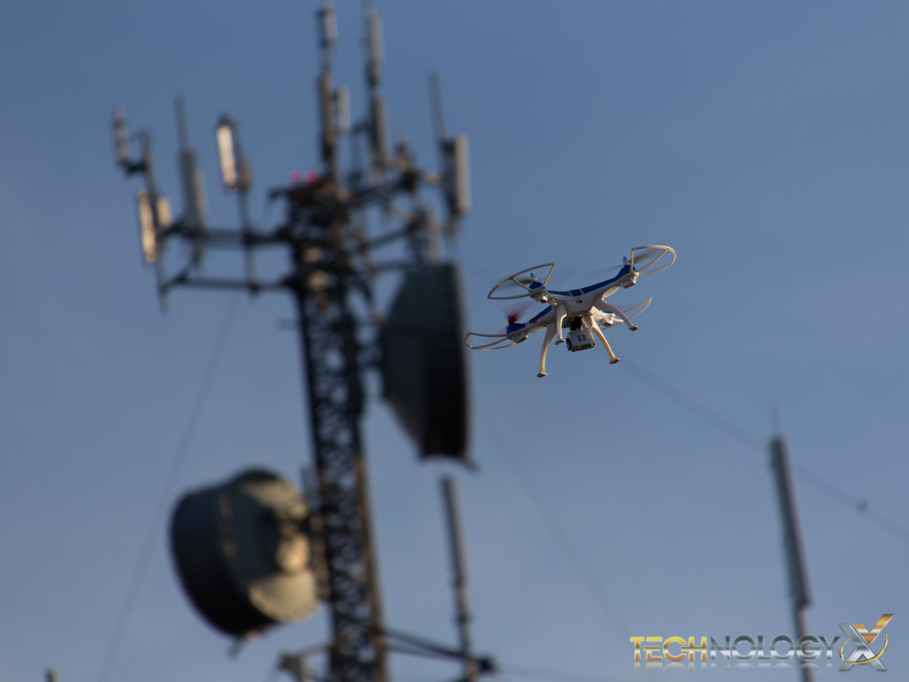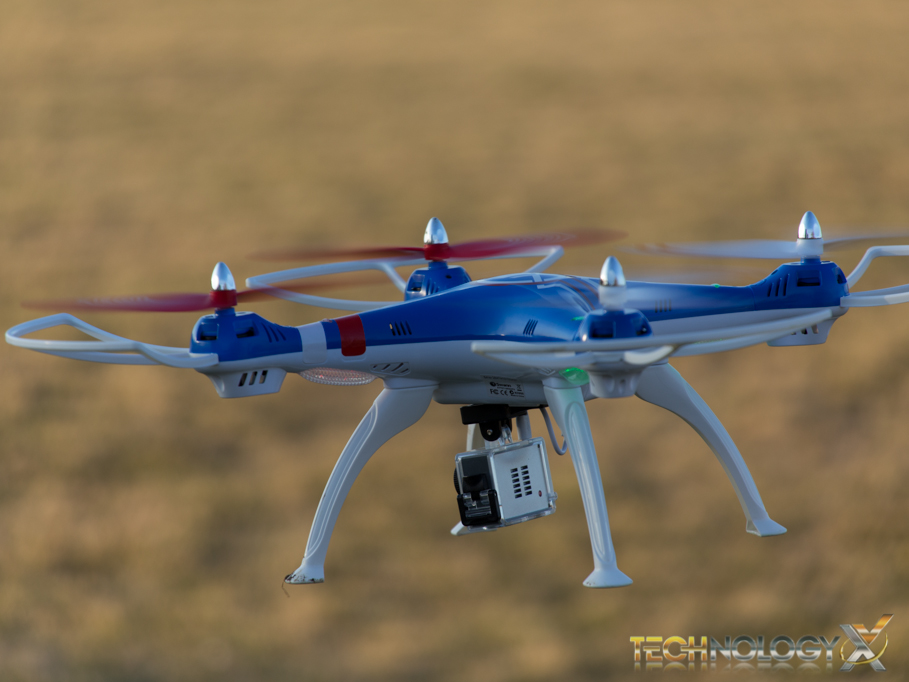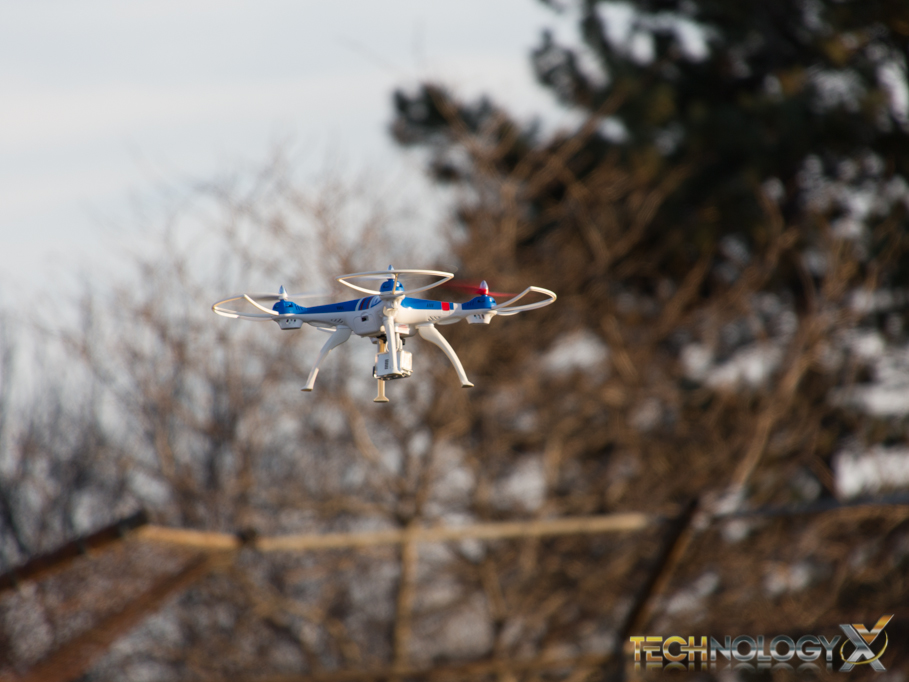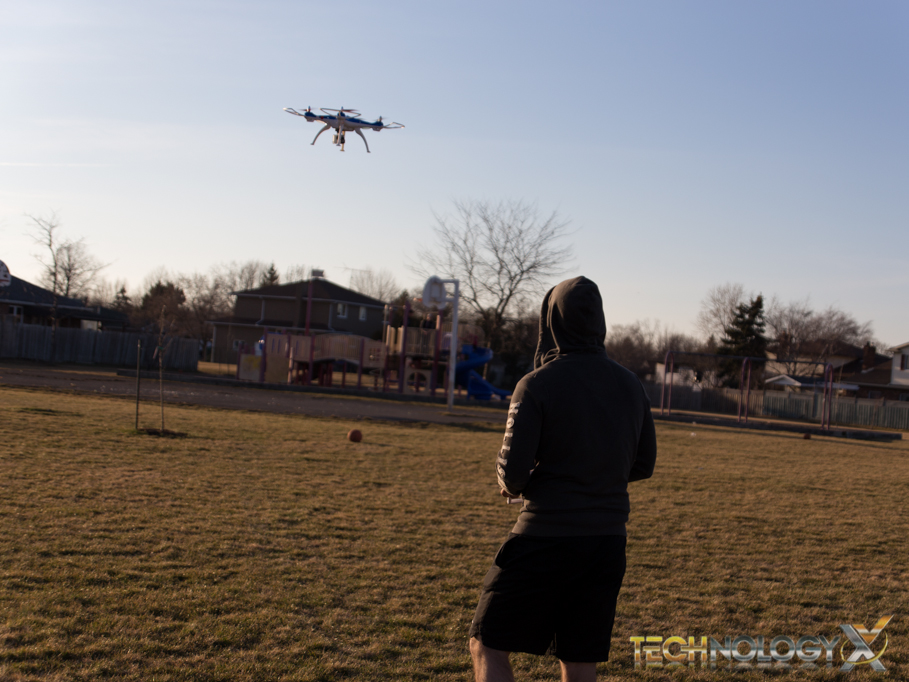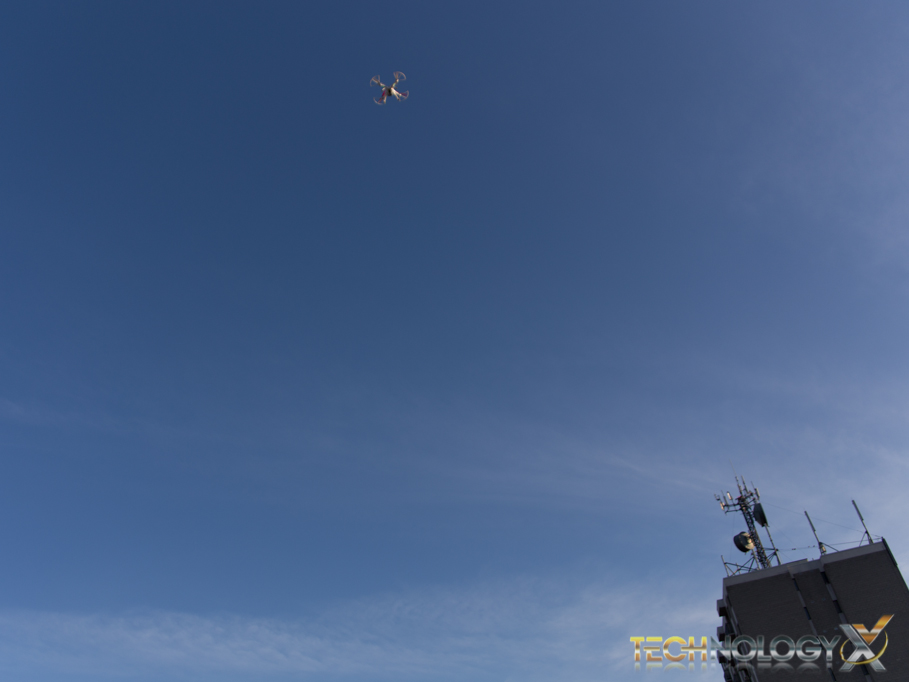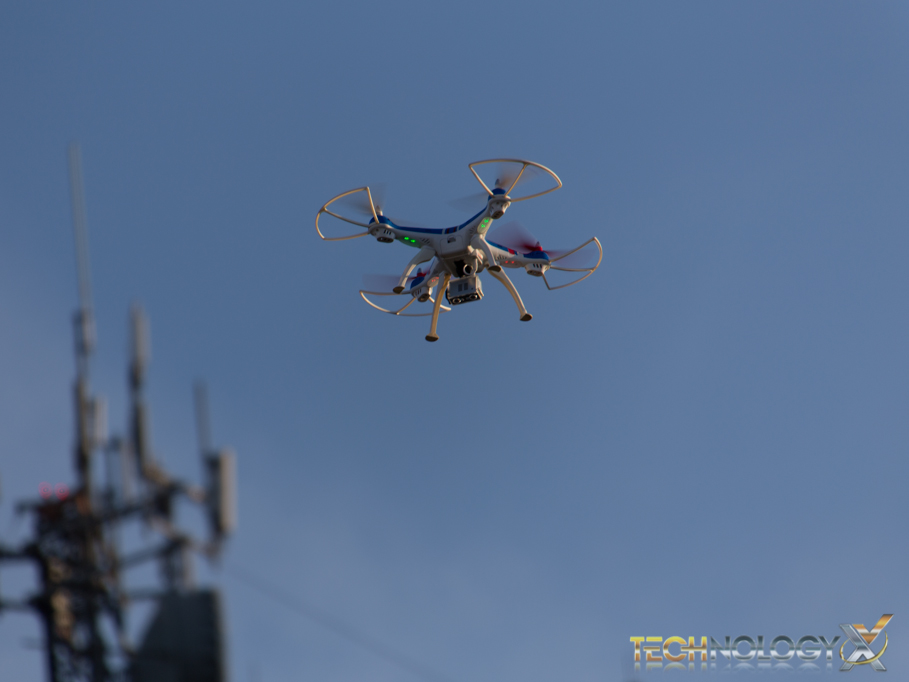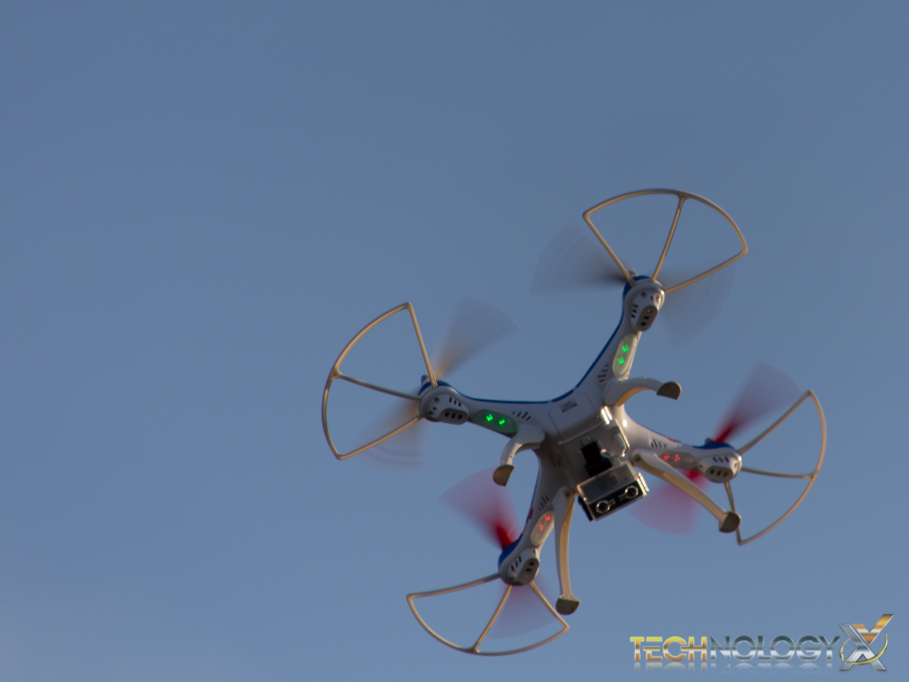FLYING
At first we struggled with flying, mainly because the drone had a tendency to lean-to one side or the other and begin travelling in that direction without any input from us, other than throttle control. We would gently adjust left, right, forward, and back trim to adjust the ‘leaning’, but it wasn’t until we consulted the instruction manual where we needed to adjust the movement, sideways and rotation trim, which essentially adjusts the propeller speeds independently. The drone also has two lying modes, ‘Low’ and ‘High’. We were forced to always use ‘High’ otherwise it was not able to handle the wind.
We then found that once we received some good weather (i.e., calm to no winds and warmer climates) this problem was averted, we were up and in the air.
Even if you fix the drone’s trim, winds will still play an extremely large factor in flying, we found it was best to fly earlier in the morning when winds were next to nil. This drone is hard to fly, taking off from the ground requires you to prepare the drone for any blowing wind otherwise you are almost guaranteed to end up on your side. Movements are jerky and sudden, and once the drone is turned around or up in the are about 100 feet, the feeling of control seems to disappear.
When it comes to flying your new drone, we highly encourage you, no we are telling you, for everyones’ safety, to please research and follow the appropriate flying guidelines for your jurisdiction! As our testing and flying took place in Canada, we were required to follow Transport Canada’s guideline for operating drones. As this drone was being flown for the fun of flying, and weighs well less than 2 kg, we were not required to apply for a Special Flight Operations Certificate, since we read and followed the exemption conditions.
As a special note though, even if you are just getting started or are a seasoned flying veteran, it was still said best to fly during daylight and in good weather, always keep your aircraft in sight, to respect the privacy of others and don’t fly close to airports, in populated areas, near moving vehicles, or higher than 90 metres.
AUTONOMOUS FLYING
Similar to ‘App Controls’, there is no autonomous flying. The closest thing to autonomous flying is the ‘Intrinsic’ flying mode. Intrinsic flying allows for the drone to travel towards predefined reference point, no matter how you maneuver and alter the drone’s flight path.
While this was an interesting concept, we were not a fan of this mode. This drone is very sensitive to wind, mainly from what we presume is due to its very little weight. So having it fight the wind and fly in another direction made life more difficult.
Review Overview
Drone Build
Flying Performance
Durability
Pricing & Availability
Warranty & Repairability
Fun!
The Swann Xtreem Gravity Pursuit Drone is a fun quadcopter that gives you quick, but also sporadic movements. While this drone is agile and speedy, control is not the easiest, especially at greater heights. This drone is recommended for a younger generation looking for some quick movements just off the ground.
 Technology X Tomorrow's Technology Today!
Technology X Tomorrow's Technology Today!

